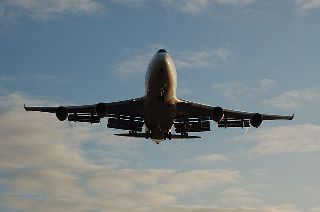 International freight volumes jumped 6.5% in September year-on-year as global demand continues to improve in volume and growth rate, according to Airports Council International (ACI).
International freight volumes jumped 6.5% in September year-on-year as global demand continues to improve in volume and growth rate, according to Airports Council International (ACI).
Volumes also rose 5.8% from January to September compared to a year ago, and posted a 5.4% expansion from the previous year on a 12-month rolling basis.
Asia-Pacific booked increases in airfreight volumes of 6.1% in September. The world’s largest airfreight hub, Hong Kong, had volumes ballooning by 5.8%.
North America also experienced buoyant airfreight traffic growth in the month, following a weakened airfreight market in 2013. Airfreight volumes in Latin-America-Caribbean contracted in September by 1.4%, while Europe and Africa experienced a more moderate growth of 3% year-over-year.
Dubai World Central (DWC), the Middle Eastern airport that has experienced exponential growth, is now a major contributor to overall increases in freight volumes for the region, observed ACI. Although only recently operational, by the end of September alone, airfreight volumes at DWC have surpassed the 500,000-metric tonne threshold on a year-to-date basis, which represents an increase of over 255% from the previous year.
Even as he noted that the global economy continues to experience a rocky recovery, ACI World’s economics director Rafael Echevarne said “aviation markets remain resilient and continue to grow.”
“Airfreight also continues to show a glimmer of hope, irrespective of downside risks in the global economy. Volumes have remained above 2013 levels for all of 2014 up to the 4th quarter. This is cause for optimism given that the airfreight markets were particularly sluggish over the last three years.”
Echevarne puts growth in global freight volumes by the end of 2014 at 4% compared to the previous year’s volumes.
Korean Air swings to net loss but expands operating profit
Meanwhile, Korean Air Lines, South Korea’s largest air carrier, swung to an overall net loss in the third quarter from a year ago but posted growth in operating profit due to lower fuel costs.
Korean Air’s net loss reached KRW392 billion (US$361.3 million) in the July-September period compared to a net profit of KRW335.4 billion a year ago, as a weaker won against the U.S. dollar in the third quarter increased the cost of the company’s overseas debts and interest payments, according to a report by Yonhap.
But operating profit rose by 50.3 percent year-on-year to KRW240.7 billion on falling fuel costs, while sales edged down 0.6 percent to KRW3.16 trillion.
The carrier said it expects earnings to improve further in the fourth quarter on lower fuel costs, a weaker yen, and increased cargo traffic toward the end of the year.
For its cargo freight operations, it predicts demand to pick up pace in the fourth quarter on the back of the global economy recovery and cheaper fuel costs.
“We plan to operate additional services to transport new smartphones, home appliances and chips to maximize profit,” the company said in a release.
SIA Cargo cuts operating loss
Market conditions in cargo are improving for the first time after four or five challenging years for Singapore Airlines (SIA) Cargo. Its cargo yields improved by 2% in the first half of its fiscal year 2015, narrowing its operating loss by S$37 million (US$28.6 million) from a year earlier, said the company.
SIA Cargo expects a further improvement in demand through Christmas. But overcapacity is expected to continue to put pressure on profits.
“Demand is generally flat, and yields will remain under pressure amid intense competition from other airlines and promotional activities in weaker markets,” it said.
Photo: Alec Wilson




